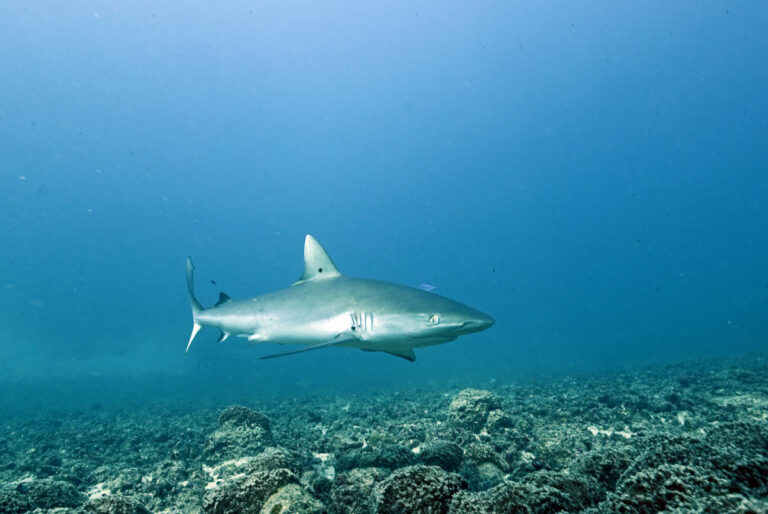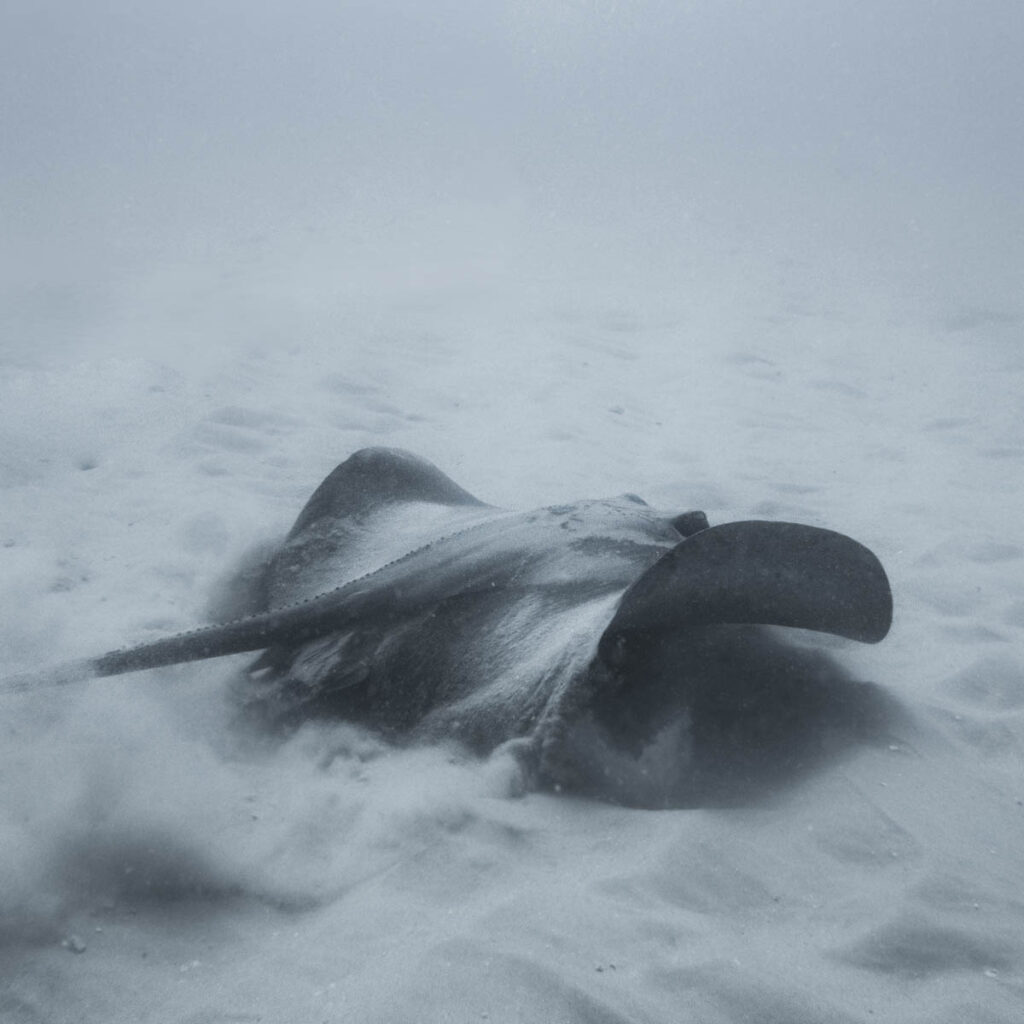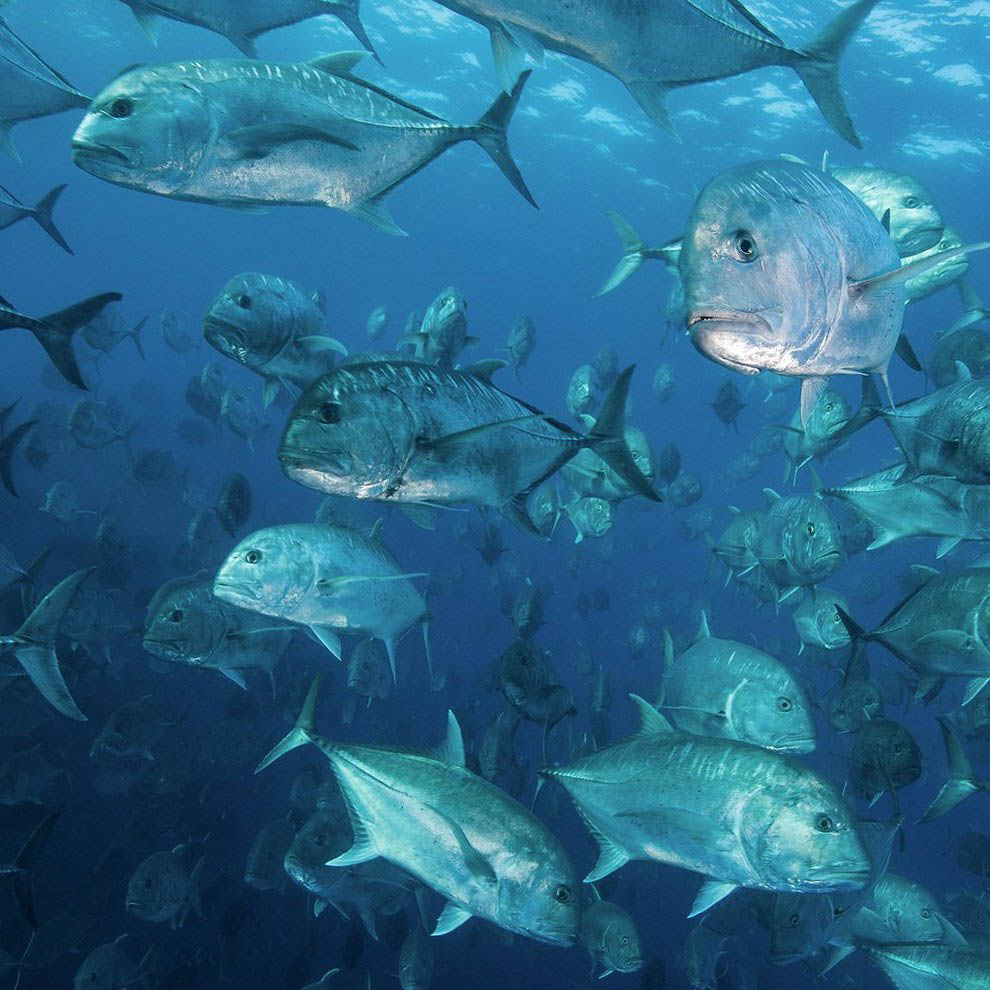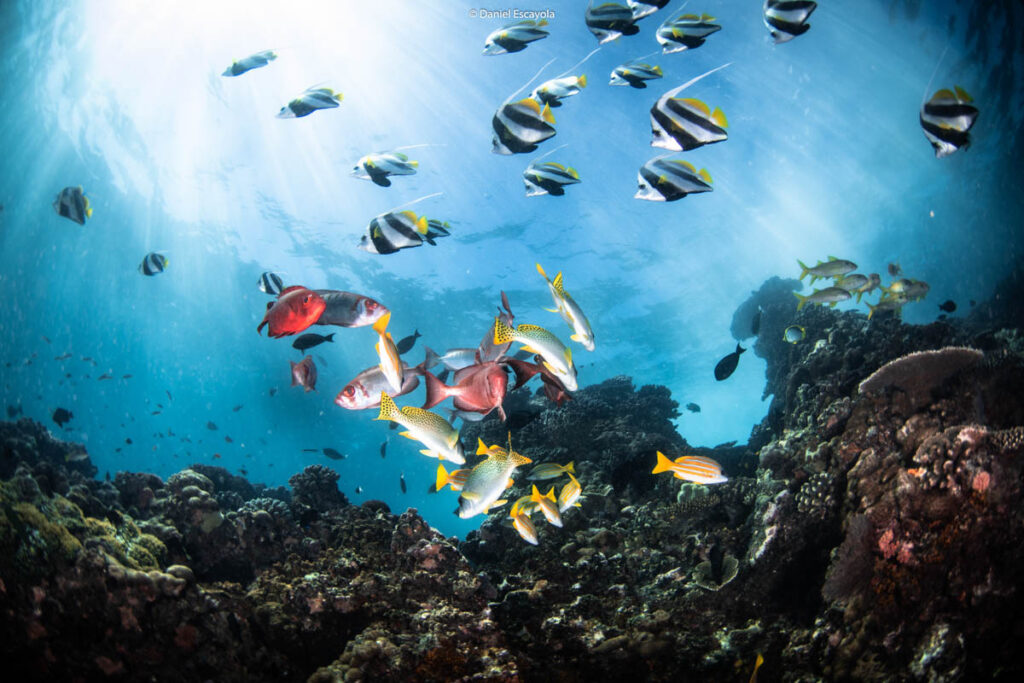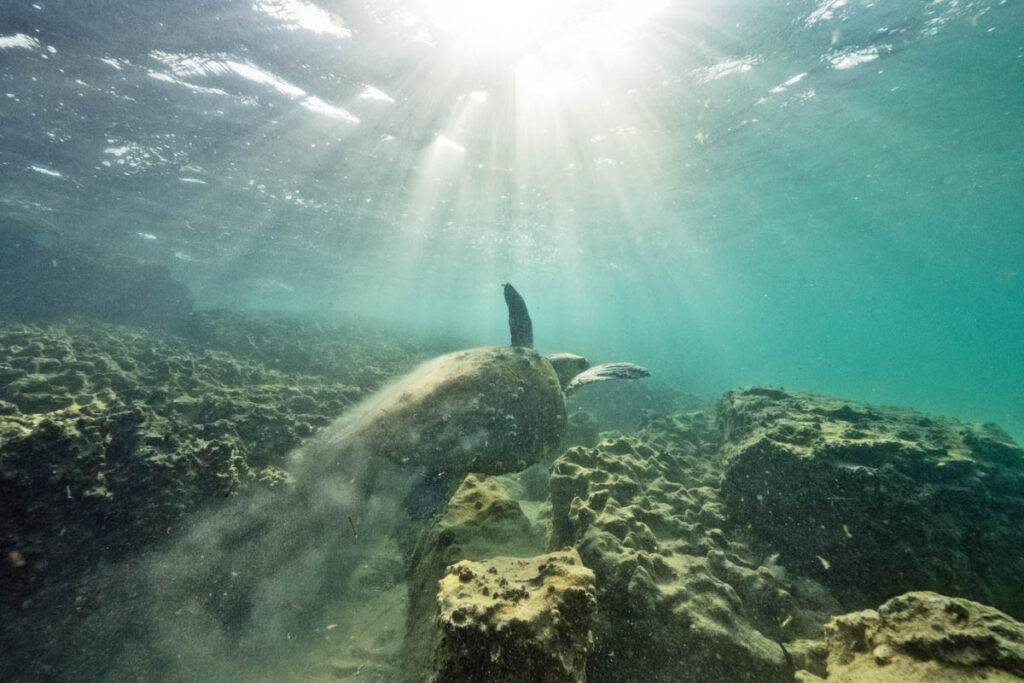Where should you dive for a chance to encounter your favourite marine animal?
Students participating in BCSS’ Scientific Training Program tried to answer this question by carrying out a nine-month exploratory diving survey of marine megafauna at different dive sites around the Bazaruto Archipelago.
To assess the chances of encountering a particular taxon under the water, the students calculated the percentage of specific species’ occurrence per dive using historical BCSS sightings records. They also analysed which species they saw most commonly at which one of BCSS’ 13 dive sites. They recorded sightings of 45 different marine megafauna species on 144 dives from mid-March to mid-December 2023.
Sharks and rays in abundance
If sharks and rays are your thing, then don’t just stop at seamounts and cleaning stations though. There’s plenty more to choose from in and around the Bazaruto Archipelago. Especially Turtle Cove (Grey Reef Sharks) and Rollercoaster (Bull Sharks, Grey Reef Sharks, Nurse Sharks) were frequented by sharks during the students’ survey and Marlin Pinnacle even hosted some Hammerheads and Oceanic Black Tips.
Overall, the students recorded shark sightings on more than a third of all their dives. Grey Reef Sharks were the most frequently sighted shark species, followed by Bull Sharks, Hammerheads, Oceanic Black Tip Sharks, Nurse Sharks, and a Whitetip Reef Shark. Zebra sharks can also be found in the Bazaruto Archipelago as a study with BCSS-involvement published this year in Frontiers of Marine Science found, even though the students did not see any.
Sightings of other ray species included round ribbontail rays, spotted eagle rays, devil rays, and honeycomb rays.
A popular pit stop for turtles
What’s special about turtle diving around the Bazaruto Archipelago seascape? With a bit of luck, you can spot five different species of turtle – hawksbill, green, olive ridley, leatherback, and loggerhead. With sightings on almost 50% of all the students’ dives, it is fair to say that the Mozambican waters is a turtle paradise.
Why are they so plentiful here? The name of one of our most popular dive sites implies it. Turtle Coves is a coral patch that serves as a cleaning station and resting place for migrating turtles. But keep your eyes open to other animals at Turtle Coves as well. Some notable species recorded here include bluespotted ribbon rays and kuhl’s maskrays.
Barracudas, moray eels, lobsters, and the rest
With the second most biodiverse coral reefs in the world hosting over 2,000 species of fish, the Bazaruto Archipelago has rightfully received high praise as a unique “gem.”
The sightings analyses proved that if you dive most dive sites here, you are all but guaranteed to spot parrot fish, bluebanded snappers, rubberlips, orange spotted coral rockcods, sweetlips, moray eels, and rockcod. Three species of trevally, lionfish, potatoe bass, and sawteeth barracuda are also found in great abundance. You may also see lobsters, great barracuda, brindle bass, crocodile fish, or even the African pompano.
The perfect fieldwork laboratory
The results offer a glimpse of the richness of species divers may encounter in the Bazaruto seascape. This opportunistic data collection survey also highlights one of the many ways in which students can enhance their professional diving skills while contributing to the monitoring of one of the world’s most precious marine ecosystems. Through BCSS’ Scientific Training Program, students can gain hands-on professional experience reaching beyond species identification. Our STP enables students to engage in fieldwork design, scientific writing, as well as scientific data collection and analysis and laboratory work.
Complementing the Marine Big Five
The students stopped short of monitoring the movement of marine mammals. Nonetheless, the Bazaruto seascape is a hotspot for cetaceans and sirenians alike. Our observations have proven that in addition to the last known viable population of dugongs in East Africa, there are at least nine species of whales and dolphins that traverse the waters of the Bazaruto Archipelago year-round. June to November is humpback whale season and between June and September we sometimes even see pilot whales.
Overall, the students recorded sightings of sharks during more than 34% of dives, they spotted turtles and rays during nearly half of all dives, and they observed a huge variety of bony fish results on virtually every one of their 144 expeditions. These results make it clear that divers will have extraordinary opportunities for encounters with some of the ocean’s most charismatic residents while visiting Mozambique.
While our scientific station encompasses research, monitoring, conservation, education, and capacity building, recreational diving activities are also offered to facilitate environmental awareness and are open for divers with no academic background. We are keen to share our knowledge and years of experience widely, making our facilities and unparalleled marine biodiversity, that we’re surrounded by, accessible for and known by those who’d like to support wildlife while exploring it.
Whether you choose one of our short-term expedition packages, decide to enhance your diving skills with us, or plan to become a professional dive master with us, diving with BCSS will put you in a unique position to tick off the marine Big Five.
As a PADI 5 Star Dive Center, we provide a wide range of PADI scuba educational programs and first-time experiences. We seize opportunities that allow us to learn more about our oceans and its inhabitants through scuba diving and encourage environmental practices.
BCSS’s not-for-profit nature ensures all funds, collected through recreational diving and courses, are going directly and fully to marine science and conservation in Mozambique.
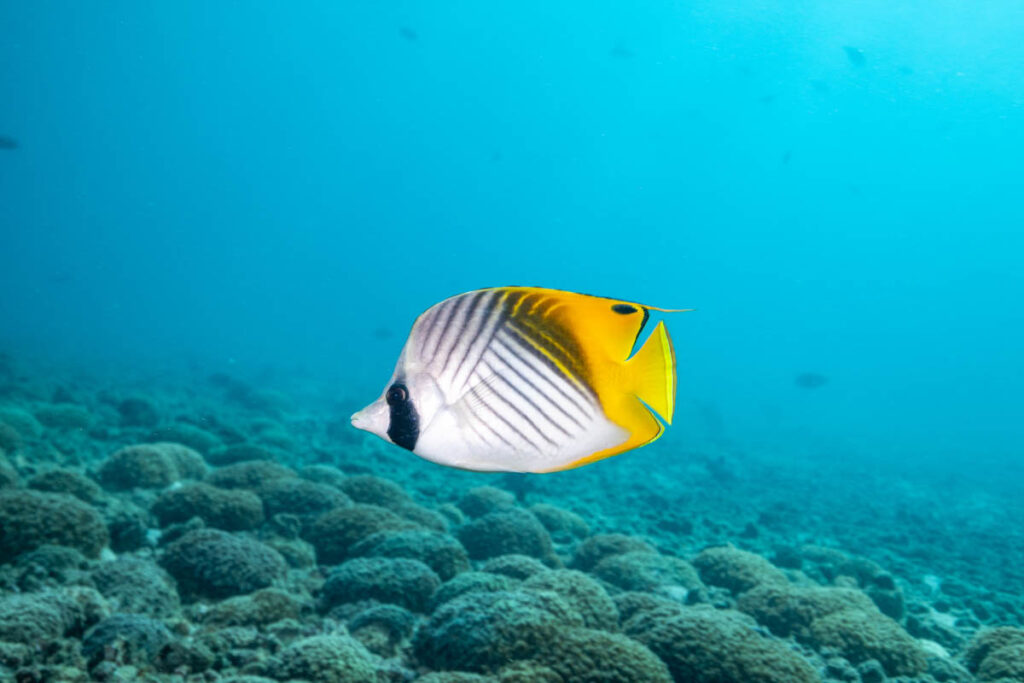
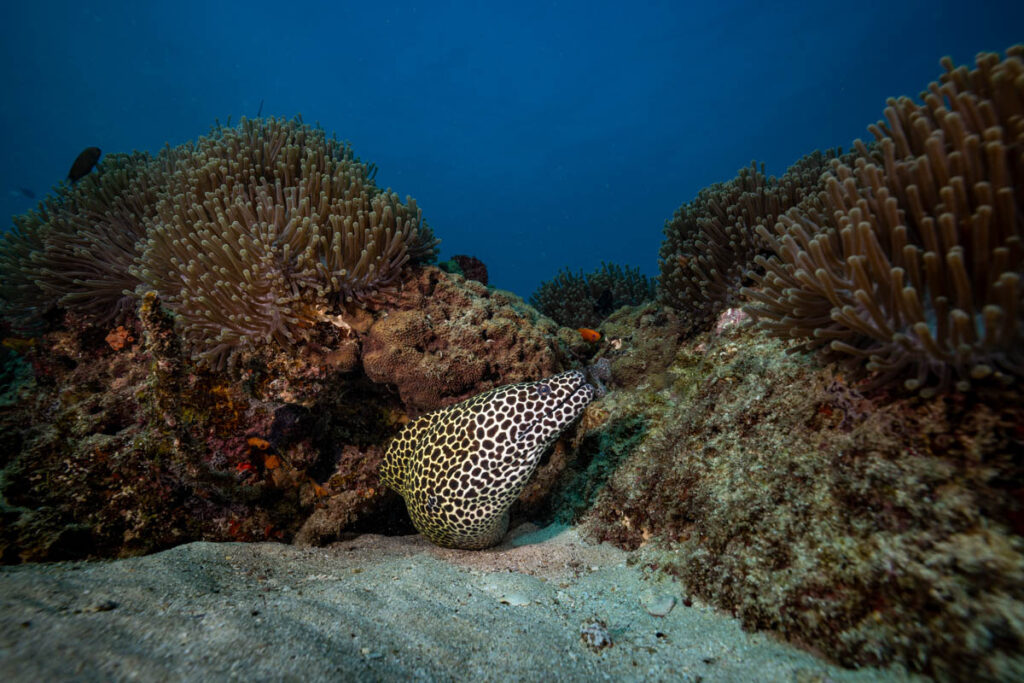
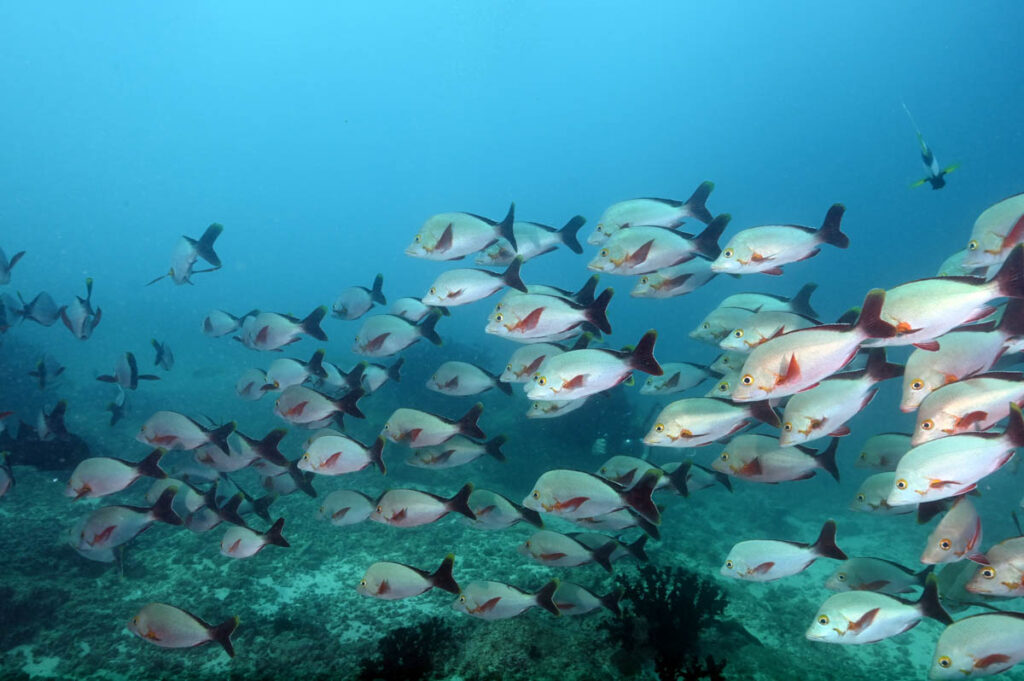
Article kindly authored by Alexander Wowra



